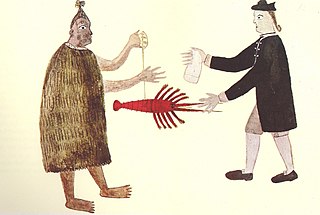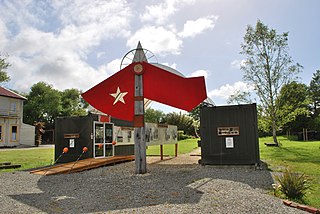Related Research Articles

The politics of New Zealand function within a framework of an independent, unitary, parliamentary democracy. The system of government is based on the Westminster system, and the legal system is modelled on the common law of England. New Zealand is a constitutional monarchy in which King Charles III is the sovereign and head of state, while his prime minister serves as the head of government.
The New Zealand Labour Party, also known simply as Labour, is a centre-left political party in New Zealand. The party's platform programme describes its founding principle as democratic socialism, while observers describe Labour as social democratic and pragmatic in practice. The party participates in the international Progressive Alliance. It is one of two major political parties in New Zealand, alongside its traditional rival, the National Party.

The New Zealand Parliament is the unicameral legislature of New Zealand, consisting of the Sovereign (King-in-Parliament) and the New Zealand House of Representatives. The King is usually represented by his governor-general. Before 1951, there was an upper chamber, the New Zealand Legislative Council. The New Zealand Parliament was established in 1854 and is one of the oldest continuously functioning legislatures in the world. It has met in Wellington, the capital of New Zealand, since 1865 and in its current building since 1922.

This is a timeline of the history of New Zealand that includes only events deemed to be of principal importance – for less important events click the year heading or refer to List of years in New Zealand.

Blackball is a small town on the West Coast of the South Island of New Zealand, approximately 29 km from Greymouth. Elevation is approximately 100 metres.

The 1951 New Zealand waterfront dispute was the largest and most widespread industrial dispute in New Zealand history. Over the period, up to 20,000 workers went on strike in support of waterfront workers protesting against financial hardships and poor working conditions. Thousands more refused to handle "scab" goods. The dispute was sometimes referred to as the waterfront lockout or waterfront strike. It lasted 151 days, from 13 February to 15 July 1951. During the lockout, the Watersiders' Union was deregistered and its funds and records were seized, and 26 local watersiders' unions were set up in its place.
The following lists events that happened during 1979 in New Zealand.
The following lists events that happened during 1912 in New Zealand.
The following lists events that happened during 1914 in New Zealand.

New Zealand is an island country in the southwestern Pacific Ocean. It consists of two main landmasses—the North Island and the South Island —and over 600 smaller islands. It is the sixth-largest island country by area and lies east of Australia across the Tasman Sea and south of the islands of New Caledonia, Fiji, and Tonga. The country's varied topography and sharp mountain peaks, including the Southern Alps, owe much to tectonic uplift and volcanic eruptions. New Zealand's capital city is Wellington, and its most populous city is Auckland.

The New Zealand Educational Institute is the largest education trade union in New Zealand. It was founded in 1883 and has a membership of 50,000.
The Human Rights Commission is the national human rights institution (NHRI) for New Zealand, operating independently from direction by the Cabinet. Founded in 1977, the commission addresses issues of discrimination, equality, and human rights through education, advocacy, and resolving complaints. It provides guidance on anti-discrimination law.

State Highway 20 (SH 20), also known as the Southwestern Motorway, is a New Zealand state highway linking State Highway 1 at Manukau with State Highway 16 in Point Chevalier, via Māngere and Onehunga. Along with its spurs, State Highway 20A and 20B, the state highway serves Auckland Airport, the country's largest, therefore making SH 20 a key arterial route connecting the airport to the wider Auckland region and most of the upper North Island. The route also forms the southern part of the Western Ring Route, a 48 kilometres (30 mi) motorway route bypassing central Auckland.

Mining in New Zealand began when the Māori quarried rock such as argillite in times prior to European colonisation. Mining by Europeans began in the latter half of the 19th century.

Māori are the indigenous Polynesian people of mainland New Zealand. Māori originated with settlers from East Polynesia, who arrived in New Zealand in several waves of canoe voyages between roughly 1320 and 1350. Over several centuries in isolation, these settlers developed a distinct culture, whose language, mythology, crafts, and performing arts evolved independently from those of other eastern Polynesian cultures. Some early Māori moved to the Chatham Islands, where their descendants became New Zealand's other indigenous Polynesian ethnic group, the Moriori.
The New Zealand Federation of Labour, also known as The Red Federation and The United Federation of Labour, was a New Zealand federation of syndicalist trade unions which was formalised in 1909. The federation is best known for its involvement in the nation-wide Great Strike of 1913 which almost brought New Zealand's economy to a halt. The Federation's members were often referred to as 'Red Feds'.

Blackball Museum of Working Class History (Mahi Tupuna) is a museum in Blackball, a small town on the West Coast of New Zealand, that opened in May 2010. The collection celebrates the role of working people in creating the nation and its wealth.
The 1908 Blackball miners' strike was industrial action that happened when seven miners in the small town of Blackball, on New Zealand's West Coast, were dismissed for taking longer than their allocated fifteen minutes, for lunch. This was one of many issues that were causing discontent within the coal-mining industry that was set up as a series of capitalist enterprises to meet the shipping needs of Britain as an imperial power. When Blackball township was established, the mining company provided low-quality living and working conditions for the miners and after the town became populated by immigrants with union experience overseas, some of the grievances that eventually resulted in the strike emerged. The strike has been seen as a formative event in New Zealand history because of the successful outcome for the miners from the eleven-week strike by the use of direct action and organised unionism. This was the first real challenge to the Arbitration Court, set up under legislation by the Liberal Government in 1894 to support mediation in industrial disputes, and highlighted the difficulties of getting a resolution because of the wide range of political, social and cultural factors that resulted in a degree of intransigence by both the miners and the mine company. A number of the leading strikers subsequently became leaders in the political labour movement.
A number of labour strikes, labour disputes, and other industrial actions occurred in 1979.
References
- ↑ Derby, Mark (11 March 2010). "Early labour disputes". Te Ara. Retrieved 30 October 2024.
- ↑ "How to Stop a Schoolboys' Strike". Nelson Evening Mail. 12 October 1889. Retrieved 30 October 2024.
- ↑ "Schoolboys' strike in Wellington". Taranaki Herald. 12 October 1889. Retrieved 30 October 2024.
- ↑ Boraman, Toby (10 April 2023). "Strikes, protests and collective action: how fighting a cost-of-living crisis wasn't always about tightening your own belt". The Conversation. Retrieved 20 September 2024.
- ↑ Derby, Mark (11 March 2010). "Story: Strikes and labour disputes - The decline of the arbitration system". Te Ara. Retrieved 20 September 2024.
- ↑ "Air New Zealand Strike Ends". The New York Times. 25 December 1984. Retrieved 9 October 2024.